Like human bodies, motorcycles can take a lot of abuse and keep on running. But there are some sure-fire ways to screw up your motorcycle, often done through a combination of ignorance, incompetence and neglect. Treat your motorcycle right and it will do the same for you.
1. Not Maintaining Proper Tire Pressure
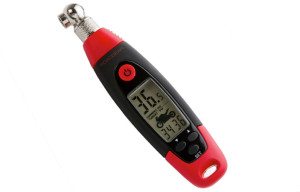
Motorcycles, cars, trucks, you name it—there are millions of vehicles out on the road with under-inflated tires, which reduces gas mileage and makes the tires run hot, shortening their lifespan. (You can also over-inflate tires, but it’s less common.) Some people check their tire pressure before every ride—not a bad idea, especially if you’re on a multi-day tour—but do it at least once a week or at every fill-up. Check your tires when cold, use your own tire gauge (keep one in your toolkit or saddlebag) and follow inflation guidelines printed on the VIN plate on your bike or in the owner’s manual (#10). When checking tire pressure, also inspect for foreign objects that may be stuck in your tires and for signs of wear or other damage.
Read our review of the Roadgear Programmable Digital Tire Gauge
2. Wasting Money on Premium Fuel When Your Bike Doesn’t Need It
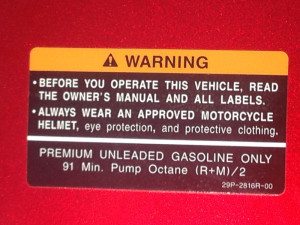
Your bike’s owner’s manual (#10) or a sticker on the fuel tank will tell you the minimum octane fuel (PON, or pump octane number) that your motorcycle requires. Many of today’s motorcycles require premium fuel (typically 90 PON or higher), but some modern motorcycles and many older ones require only regular fuel (usually 86 or 87 PON). Running lower-than-recommended octane fuel is very bad; it can cause detonation (knocking) and potentially damage the engine. Running higher-than-recommended octane fuel wastes money at the pump (don’t fall for the gasoline companies’ marketing about high-octane fuel being “better”; it won’t boost performance and the EPA requires all fuel grades to have engine-cleaning detergent additives), and it can reduce gas mileage.
3. Not Regularly Checking and Changing the Oil

All internal combustion engines have reciprocating metal parts that require proper lubrication to reduce friction and heat. Some engines, especially older ones with worn seals, gaskets and piston rings, will consume oil, either by burning it up in the combustion chamber or simply leaking out. Get in the habit of checking your oil level—some motorcycles have sight glasses, others have dipsticks—every time you fill up the gas tank. And refer to your owner’s manual (#10) for the recommended oil change interval (in miles and/or months). Oil filters collect dirt, debris and metal particles, so make sure to install a new oil filter when you change the oil.
4. Forgetting to Clean, Lube and Adjust the Chain
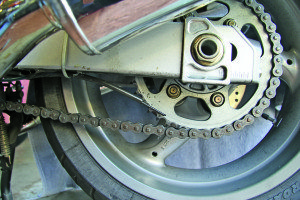
If your motorcycle has chain final drive, neglecting to clean, lubricate and adjust the chain is asking for trouble. (Drive belts don’t need to be lubricated, but they should be regularly inspected for wear and proper adjustment.) If you have an older bike it may have a non-sealed chain (which requires more care and maintenance), but most contemporary motorcycles have O-ring chains, which have small rubber O-rings between the link plates and rollers that help keep lube in and dirt out. Most owner’s manuals recommend lubricating the drive chain every 400-500 miles, but if you ride in wet or dirty conditions, you should lube the chain more often, perhaps every day. If possible, before adding lube, clean the chain with a non-wire brush and mild soap. Lubricate the chain after a ride, when the chain is warm, to help the lube penetrate the small spaces between the O-rings, plates and rollers, and use a dedicated motorcycle chain lube, such as Spectro Oils Z-Clean Chain Lube. With the bike in neutral and up on its centerstand or a rear-wheel paddock stand, spin the rear wheel forward and spray the lube on the top of the lower chain, just before it comes in contact with the rear sprocket. Wipe off any excess and spin the rear wheel a few more times to help the lube work its way in. Once the chain has been cleaned and lubed, check for proper chain tension, make any necessary adjustments and check the chain and sprockets for wear.
Read our Scottoiler Chain Oiler eSystem review
5. Not Using Fuel Stabilizer or Draining the Carbs During Short-Term Storage
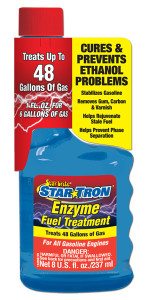 Those of you with fuel-injected bikes, count yourselves lucky and move on. But if your motorcycle has carburetors and it sits for more than a couple of weeks between rides (hello, winter!), it’s teeny-tiny jets and other parts can become clogged or gummed-up by old fuel that breaks down over time and creates sticky varnish. Regularly using a fuel stabilizer such as StarTron and draining the carburetor’s float bowl after a ride when the bike will be parked for a while (the easiest way is to turn the fuel off and let the bike run in neutral until it conks out) are the best ways to protect your carbureted fuel system against the scourge of today’s ethanol-blended gasoline.
Those of you with fuel-injected bikes, count yourselves lucky and move on. But if your motorcycle has carburetors and it sits for more than a couple of weeks between rides (hello, winter!), it’s teeny-tiny jets and other parts can become clogged or gummed-up by old fuel that breaks down over time and creates sticky varnish. Regularly using a fuel stabilizer such as StarTron and draining the carburetor’s float bowl after a ride when the bike will be parked for a while (the easiest way is to turn the fuel off and let the bike run in neutral until it conks out) are the best ways to protect your carbureted fuel system against the scourge of today’s ethanol-blended gasoline.
Read about more about “Fuel Stabilizers and Short-Term Storage”
6. Forgetting to Lube and Adjust the Throttle, Clutch and Brake Cables
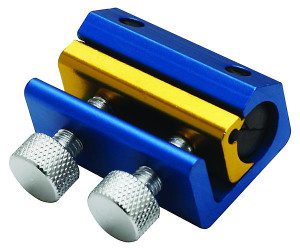
The control cables that actuate the throttle, clutch and brakes are absolutely critical components that are often overlooked, a simple matter of “out of sight, out of mind.” A sticky cable that doesn’t move back and forth properly can be dangerous, and a broken cable can leave you stranded in the middle of nowhere. According to Motion Pro, which makes a wide variety of motorcycle tools, cables and controls, motorcycle control cables should be lubricated and adjusted at least once per riding season and more frequently for dual-sport and off-road bikes that see much more wear and tear. We recommend reading Motion Pro’s handy how-to guide “Cable Maintenance 101.” Motion Pro also makes a handy Cable Luber ($9.99) and sells Cable Lube ($15.99 for a 6 oz. can).
7. Not Using a Battery Maintenance Charger
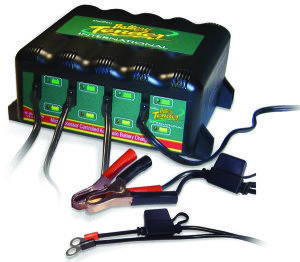
Even if your bike is parked safely in the garage, over time its battery will self-discharge. Allowing the battery to discharge can lead to sulfation—the build-up of lead sulfate crystals—which can result in a loss of cranking power (your bike won’t start), longer charging times and, ultimately, shorter battery life. The best way to keep your motorcycle’s battery healthy is to use a smart maintenance charger such as a Deltran Battery Tender. It has “microprocessor controlled power electronic circuitry” which enables it to perform and control various charging functions, including battery testing, bulk charging and float/maintenance charging to keep the battery in optimal condition.
Read our review of the Deltran Battery Tender 4-Bank Motorcycle Charger
8. Not Checking and Changing the Final Drive Oil
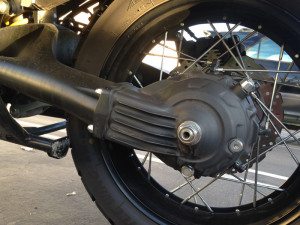
Many touring riders love motorcycles with shaft final drive because of their cleanliness and low maintenance. Although heavier than chain final drive, shafties don’t fling chain lube onto the swingarm or rear fender and they don’t need to be adjusted or replaced like chains and sprockets. But the gears inside shaft drives are lubricated with oil that needs to be checked regularly (in case there are leaks or it has become contaminated) and changed according to the recommended service interval in the owner’s manual (#10). Our Yamaha Super Ténéré ES long-term test bike, for example, needs its final drive gear oil changed during the initial break-in service (at 600 miles) and every 16,000 miles thereafter. That’s a long enough interval to easily forget about or ignore, but the consequences can be very costly—replacing a damaged final drive is much more expensive than replacing a chain and sprockets.
9. Not Changing the Brake Fluid
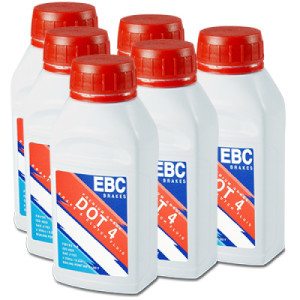
This is another one that’s easy to overlook. Hydraulic brakes work extremely well, especially modern triple-disc systems with ABS, but for brakes to work properly the hydraulic fluid must be changed regularly. Glycol-ether (DOT 3, 4, and 5.1) brake fluids are hygroscopic, which means they absorb moisture, which contaminates the fluid over time. Most motorcycle owner’s manuals (#10) recommend changing brake fluid every two years and replacing the brake hoses every four years. Sticking to these service intervals, as well as checking and replacing your brake pads as needed, are critical for the safe and optimal operation of your motorcycle.
Read our DP Brakes Sintered Brake Pad review
10. Not Reading the Owner’s Manual

There are a lot of references to #10 in this list because your motorcycle owner’s manual is an important source of maintenance information. Very few people read their owner’s manual cover-to-cover, but it’s a good idea to at least flip through it and become familiar with its contents. Most owner’s manuals have sections on safety, general information, specifications, routine maintenance/adjustment, troubleshooting, warranty information and a maintenance/service log. Your owner’s manual contains information about proper tire pressure (#1), fuel type (#2), checking and changing oil (#3), load capacity, suspension settings and much more. If possible, keep your owner’s manual on your bike (under the seat or in a saddlebag), sealed in a durable plastic bag. Buying the service manual for your particular model is also a good idea; keep it in your garage with your tools for handy reference.

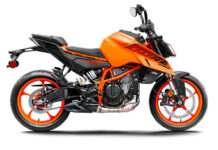

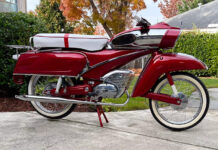
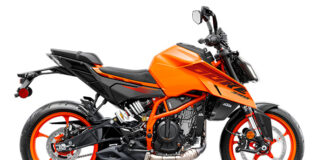

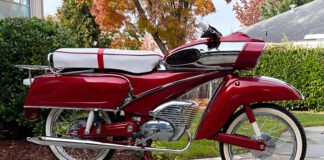

I have a cbr250r,I have to change sprocket,is it OK if I put ktm sprocket?
Mobile motor oil OK for 07 harley ultra
Not if it has a wet clutch. Use motorcycle oil in that case.
A thing about #6, I’ve got hydraulic brakes and clutch so i didn’t worry about lubrication. It was then my fault when i was going down the highway and went to pass and couldn’t get my gears to catch after letting it out, quite dangerous on the highway. I was at my exit so went down to the light and stopped the when i turned right it was slipping while accelerating. I was about to take it to the shop for what i imagined would be expensive but before i did i checked the levers and the clutch wasn’t going all the way back to the rest position. A minute or two with a screwdriver i found out it had built up some crud at the pivot. Got that off with wd 40 and then applied some 3 in one. It was like a new bike after that $1 repair but could’ve been about more expensive if i had gotten it to the shop or worse had an accident on the highway because i was slipping gears. It may be hydraulic but that doesn’t mean you can ignore it.
Good advice for bikers…..
And for motorcyclists.
REQUEST FROM: NTHABISENG SEBAKA (COMMUNITY PSYCHOLOGY –HONUORS DEGREE STUDENT – UNISA)
ANSWER FROM: MATTHEWS BANTSIJANG (PRO – RIDE-WITH MCC)
Answers to my questions as per your assignment for PYC4818 – Community Psychology
1. What does MCC stands for?
MCC stand for Motorcycle Club, however there is more explanation as norm to bikers as follows:
The MCC is a serious motorcycle or bikers’ lifestyle club. However, with the acronym signifying that such clubs are non-outlaw. The MCC have a constitution or a set of rigid rules with some of the following:
• Minimum of six riding members, each with own bike
• Minimum bike engine capacity of 600cc
• No patch/colours holders under the age of 18
• Patch/colours has to be worn in all official club activities when riding your bike.
2. Please give us a detailed background of the History of MCC, i.e. what actually led to your existence (Historical contexts, ideologies, discourses and controversies, as well as knowledge practices relating to MCC). As we all know, there are similarities in the knowledge ecologies that shape all communities, for example, all South African communities are to some extent affected by the legacy of colonialization and apartheid.
Motorcycle clubs emerged at the early 1900 century in America, starting in New York and spread thought America, Europe and Australia. Africa adopted the same concepts, however there is always a question of the main purpose of the MCC as some has been defined as the outlaws and others as social clubs. History of motorcycle in South Africa point the inequalities or affordability of the black being able to afford to by motorcycles. Racial inequality was normal in most sporting filed in this society because of the economic status that was the determining factor in black civilisation.
3. In short describe your community (MCC), and what it does.
Ride-With MCC is a motorcycle or bikers club that is independent non-profit organization, with the Club objectives being to promote cultural and social responsibility activities including but not limited to the making of donations to charitable causes. The following are full details of Ride-With MCC does in the community:
• Foster a friendly and sociable environment throughout the membership and encourage new members through riding of motorcycles.
• Promote safe riding, camaraderie, a common interest in motorcycle riding and the support of the riding community.
• Encourage all aspects of motorcycling/Biking.
• Improve the lives of our community and assist those in need through charity events and partnering with others to promote charity events.
• Develop a relationship between the community and other clubs.
• Will organize and attend biking events.
4. What is your perspective on this community as a post-colonial and post-apartheid space?
History if motorcycle in South Africa point the inequalities or affordability of the black being able to afford to by motorcycles. Racial inequality was normal in most sporting filed in this society because of the economic status that was the determining factor in black civilisation. But this superiority was based on the fact that the sports were not affordable to the blacks in South Africa as the results of post-colonial and post-apartheid; and also on the belief or stereotypies that the motorcycle sports is dangerous.
Even when I joined the sports full time more than a decade ago, motorcycling was white dominated and mostly white MCCs only, however to date the blacks are starting to dominate on the Motorcycling and there are more black MCC’s thought-out South Africa.
5. Who is usually considered to be included in, and excluded out of this community, and what are the consequences of this. Is there some controversy about who counts as a real member of this community?
The short answer is that the biker or motorcyclist is a person who owns the motorcycle mainly above 600cc and active as attending bike rally’s and other functions. (Please refer to my answer on number 3 on the Constitution of most of MCC defining who is the biker or motorcyclists)
6. What are the institutions and who are the individuals that shape your community (MCC) by creating formal and informal knowledge?
There are few institutions that we have created knowledge about this Motorcycling as was regarded as one of the mode of transport, but people goes to all the long die hearts of bikers as it said once a biker always biker and will die being biker.
7. Which media channels i.e. websites, newspaper articles, academic writings, movies, policies, laws, radio /TV shows etc, can you find that are specifically about this community?
Motorcycle used to appear mainly on movies and other TV shows, however all the modern platforms of media area always having special platforms for this community. Common are websites, Instagram, Facebook pages, for Clubs, lone riders and biking fraternity, and also the are other common one now a days is lots of WhatsApp groups for biking.
Contrary to a statement in #5 – fuel injected bikes also need fuel stabilizers/cleaner such as Startron. I know several riders, myself included, who have had clogged injectors, due to the crud that is created when water combines with ethanol, on their BMW F series bikes. BMW’s fix is to replace the injectors and recommend that you use a fuel treatment on a regular basis.
Been using ethanol gas in my motorcycles for 25 years in MN. Have never had a problem with clogged anything on 2 BMW’s 1150 RT & C1200, 2 Yamahas–cruiser and Venture, 1 Honda CBR 1000, 1 Kawasaki K1000 and 1 Suzuki Vstrom. Never used any fuel treatment ever on these bikes except during 6 months of winter storage.
You got lucky!
***** (five stars!) Great advice.
However, ethanol fuel treatments should be added with EVERY fill-up for motorcycles with carburetors. More people than not are having problems with clogged carburetor jets (even if the motorcycle has been started weekly but still on the same tank of gas) and the air screw o-rings, needle jet assembly o-rings and other o-rings in the fuel system will harden, crack and fail. And unless you do a LOT of web searching or look on the right forum and spend time searching, good luck buying finding a source for those o-rings if they aren’t listed as a separate OEM parts item for your motorcycle (I’m Michael-Phelps death-staring at you, Yamaha!). While I do have myown personal favorite (CRC PhaseGuard 4 Ethanol Fuel Treatment), do yourself a favor and don’t just shop the price per ounce, quart or gallon, but the price per gallon treated. Some products only treat 2.5 gal. per ounce of product, some 5, 6 and CRC–10 gallons per ounce! And, for storage, they all recommend using twice as much per gallon.
I own a 1999 Goldwing Aspencade 1500. Every other year i have all the oil, water,other fuild replaced in my bike. I also have the battery and fuses checked and replaced as needed. I also the tires and brakes checked.. I am proud to say i have NOT broke down beside the road. I have had a couple of flats. I keep my bike extra clean. I am 75 yrs. old and do not plan on selling my bike in the forseeable years. I enjoy riding with the Clubs i belong to.
I only thing i don’t like is the side gusts of winds. Ride Safe. Hawk.